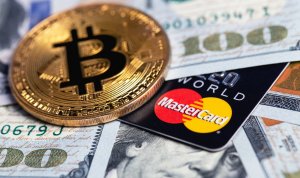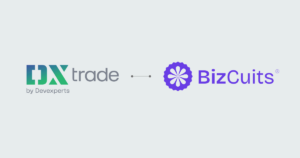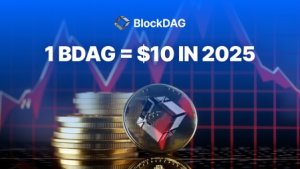Is Ripple an option for CBDCs while SEC lawsuit lingers?
It is unclear if Ripple is addressing central banks with its white paper as a way to put pressure on the ongoing legal battle with the SEC. Either way, central banks may also hesitate to work with Ripple at this particular time.

Ripple has recently released a whitepaper pitching the XRP ledger as an intermediary to connect different central bank digital currencies (CBDCs).
‘The Future of CBDCs’ touts XRP as a neutral bridge that provides intermediation between different currencies in an efficient way.
The firm led by Brad Garlinghouse claims that if the CBDCs interacted with each other, commercial companies could do international business more easily.
Cross-border payments with CBDCs are receiving little attention from central banks, the firm stated, adding it is a “short-sighted” stance as interoperable CBDCs could bring nations a competitive advantage.
“Supporting immediate real-time foreign exchanges, as opposed to the current 3-5 day process, will likely still require the need for pre-funded currency accounts”, Ripple states in the white paper.
It is unclear if Ripple is addressing central banks with its white paper as a way to put pressure on the ongoing legal battle with the SEC. Either way, central banks may also hesitate to work with Ripple at this particular time.
More so if they lose the case and the firm becomes overwhelmed with private legal claims. Too much uncertainty to deal with while competitors get in line for attention from central banks, including R3’s Corda, Ethereum, Stellar, Hedera, and eftpos.
Ripple, though, has already got France’s attention and the European Central Bank is planning to launch the digital euro within the next five years. ECB’s Panetta has proposed a threshold of €3,000 for every citizen.
The creator of the XRP ledger can still get around the legal issues and work with central banks by setting up a separate company or subsidiary. Being open-source, the ledger can always be used by any interested party, but without the privacy settings offered in its recently announced CBDC Private Ledger.
SEC vs Ripple may dictate the future of digital asset regulation
Ripple’s legal nightmare with the SEC began in December 2020, when the U.S. regulator filed a complaint in the Southern District of New York (SDNY) against Ripple Labs, Inc., and Ripple executives Bradley Garlinghouse and Christian A. Larsen in their individual capacities.
The complaint alleged they aided and abetted Ripple’s unregistered sales of securities, dating as far back as 2013 and 2015 respectively.
The SEC asked the SDNY to permanently enjoin the defendants from violating Sections 5(a) and 5(c), to disgorge ill-gotten gains and impose civil monetary penalties, as well as to ban the defendants from participating in any future offering of digital asset securities.
In its answer, Ripple stated it had “never offered or sold XRP as an investment” and that “XRP holders do not acquire any claim to the assets of Ripple, hold any ownership interest in Ripple, or have any entitlement to share in Ripple’s future profits.”
Ripple argued that “What limited contracts Ripple did enter into with sophisticated, institutional counterparties were not investment contracts, but standard purchase and sale agreements with no promise of efforts by Ripple or future profits.” Ripple “has no relationship at all with the vast majority of XRP holders today, nearly all of whom purchased XRP from third parties on the open market.”
Ripple concluded that “the SEC’s theory in the Complaint would read the word ‘contract’ out of ‘investment contract,’ and stretch beyond all sensible recognition the Supreme Court’s test for determining investment contracts in SEC v. W.J. Howey Co., 328 U.S. 293 (1946). Ripple never held an ICO, never offered future tokens to raise money, and has no contracts with the vast majority of XRP holders.”
According to the SEC’s complaint, from 2014 through the end of 2019, Ripple sold at an aggregate of 3.9 billion XRP to purchasers in the open market for a total of approximately $763 million. The complaint alleges that Garlinghouse and Larsen personally profited by approximately $600 million. The complaint adds Ripple sold $624 million worth of XRP to institutional at discounts ranging from 4% to 30% off market price. XRP II is registered as an MSB with FinCEN and has a BitLicense from NYDFS.
In the meantime, Ripple is funding Rutgers Law School as its academics aim to reform cryptocurrency and fintech regulation as their research paper argues that the Howie test is no longer suitable for judging 21st-century innovations.
Judge admits to XRP’s utility and currency value
The SEC vs Ripple case has recently been ‘bombshelled’, according to attorney Jeremy Hogan.
The Judge stated her “understanding about XRP is that not only does it have a currency value but it has a Utility and that utility distinguishes it from Bitcoin and Ether”, which means she admits to XRP’s utility and currency value. A security cannot be a currency at the same time.
The Judge also questioned the SEC attorney that, based on his theory, “everyone who sold XRP – including you and me – are selling illegal securities”. The SEC lawyer said, “no, under Section 4, only Ripple and affiliates of Ripple can have sold XRP illegally”.
This statement from the SEC lawyer clears the way for the cryptocurrency exchanges in the United States to re-list XRP again with no fear of reprisal.









